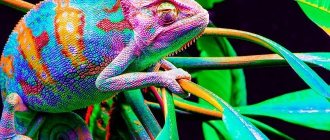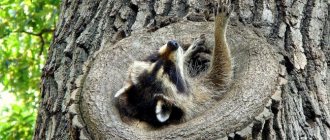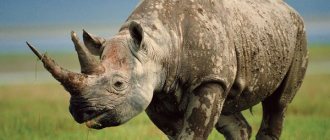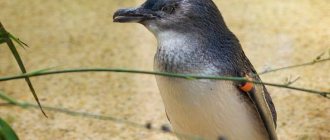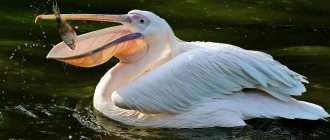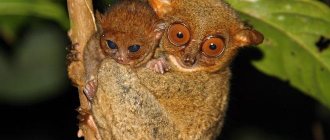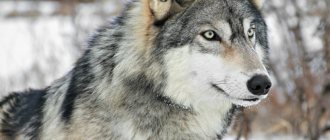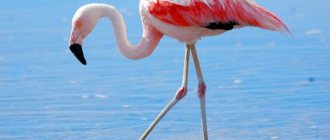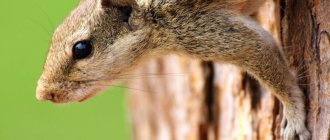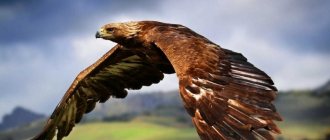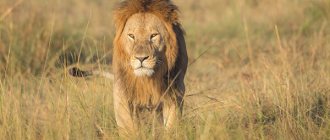Reptiles, also known as reptiles, are a class of animals, typically terrestrial and vertebrate. It includes creatures such as turtles, crocodiles, lizards, and snakes. Several centuries ago they were combined with amphibians, and now they are considered close to birds. Many reptiles are so unique that studying this class will be interesting even to a non-professional biologist. What types of reptiles are there? Photos and names, as well as some information about each, posted in our article, will help you figure this out.
Turtles
Perhaps these shelled reptiles are the most famous reptile animals. Examples include both land and sea species, they are found in many countries around the world, and they are often kept in the home even by those who are not big fans of the exotic. Turtles appeared two hundred million years ago and are believed to have evolved from primitive cotylosaurs. For a long time, people have liked them - they are practically non-dangerous animals that evoke associations only with wisdom and calmness. Turtles are the only ones of the class that have a shell. Inside it is bone, and outside it is formed by horny tissue from many individual elements connected by plates. Land turtles breathe through the lungs, while aquatic turtles breathe through the mucous membrane of the pharynx. In addition, these animals are unique in that they live longer than any other reptiles. The names of the oldest turtles include species such as the Carolina box turtle, one of the reptiles captured was 130 years old. However, more impressive figures are possible in the wild; these individuals simply did not fall into the hands of researchers.
When did reptiles appear on the planet?
The class of reptiles (or reptiles) appeared on our planet 340,000,000 years ago. Almost immediately they spread throughout the planet, some species chose land, while others descended into the depths of the sea. Flying reptiles appeared later than other species, but also occupied their niche in the animal world of the Earth.
Scientists believe that the ability of reptiles to grow throughout their lives is what ultimately killed them. After all, in the process of evolution they have reached enormous sizes, and this, as is known, leads to the extinction of the species.
Chameleons
Perhaps many people, if asked to remember the names of reptiles, will not least mention these lizards. The unusual reptiles live on tree branches and are known for their unique camouflage. Their skin can change color according to their surroundings. It's no surprise that chameleons are often kept indoors. But it is worth considering that these are quite demanding reptiles. Photos and names are not all that you need to study before buying an exotic pet. First you need to figure out the conditions of detention - the chameleon needs a spacious terrarium with heated floors and special lamps, a small pond and a tree, with excellent ventilation, and you will have to buy insects as food.
Natural enemies of lizards in the wild
Lizards have quite a few natural enemies. Most of them are predators, but there are also herbivores. Perhaps the main enemy of lizards are snakes, which consume them as food.
Iguanas
When listing the names of reptiles that often become domesticated, one cannot fail to mention iguanas. They have become very popular in recent years, and the number of such pets can be measured in tens of thousands. But you shouldn’t believe the information that keeping such a lizard is as easy as keeping a cat or dog. The iguana is a finicky creature whose existence requires a lot of attention and money. The lizard requires a special terrarium with a special temperature regime, as well as food from fresh vegetables, fruits and herbs. If all conditions are met, the iguana can grow to weigh up to five kilograms! A unique feature of these creatures is molting - in many reptiles it happens quickly, but in them it sometimes takes weeks.
Reptiles' perception of the world
Reptiles are unique animals that have not only vision and hearing, but also special sensory organs that allow them to perfectly adapt to various conditions. For example, snakes can perceive and classify odors using special cells on their tongues. Many of the reptiles have the ability to distinguish infrared radiation coming from warm-blooded creatures. This allows some reptiles to hunt even at night.
Lizards, for example, rely heavily on their vision. They see the world in a color spectrum and, according to scientists, they can also distinguish heat coming from objects. In addition, most reptiles do not have eyelids, so they cannot blink. They moisturize the mucous membrane of the eyes with the help of their tongue.
Crocodiles
These animals are perhaps the most dangerous and frightening reptiles. The names may be different - crocodiles, gharials, alligators, caimans, but in any case these are creatures from the same order. They are descended from reptiles measuring over fifteen meters in length and have been known since ancient times. Paleontologists have discovered traces of ancient crocodiles in Europe, North America, India and Africa. Now their sizes are much more modest, but they still remain the largest of the reptiles. Crocodiles spend most of their lives in water, exposing only their eyes, nose and ears. The tail and webbed feet make swimming an easy task, but only the combed variety can swim far out to sea. They build nests on land, and sometimes they just go out to bask. The names of the reptiles of this order are different, but both the alligator and the crocodile have one thing in common - they are dangerous to humans. The reptile has incredible speed and a strong tail, so a sudden lunge can cost an unwary traveler his limbs or even his life.
Reptiles: what they look like
Reptiles are animals with an elongated body and small short legs (some species lack them). Their skin is always dry, and the need for water and fresh air is minimal. When moving on the ground, animals seem to crawl along the surface, which is why they are called “reptiles.” Reptiles grow very slowly, and their growth occurs throughout their lives. The lifespan of some reptile species reaches six hundred years.
Most reptiles tolerate hot weather well and literally “charge” themselves from the sun. It is enough for them to crawl onto a warm surface after a cold night for their body temperature to rise to approximately human temperature. On too hot days, reptiles hide in the shade.
Snakes
These are another reptile whose names are known to everyone. They differ from other reptiles in their long body shape, the absence of paired limbs, eyelids and the external auditory canal. Individual similar signs can be found in lizards, but all together - only in snakes. Nowadays, three thousand species of them are known to man. The body of a snake consists of three parts - head, body and tail. Some species have preserved hind limbs in rudimentary form. Many of them are poisonous, with canalized or grooved teeth that contain a dangerous liquid that comes there from the salivary glands. All internal organs are distinguished by their elongated shape, and the bladder is absent. The eyes are covered by a transparent cornea, formed from fused eyelids. In diurnal snakes, the pupil is located transversely, while in nocturnal ones it is vertical. Due to the reduced ear, only loud sounds are distinguished.
Description of individual species
Reptiles are naturally endowed with a high ability to survive and preserve the species. In the wild, both herbivores and predatory reptiles are found. The list of titles includes:
- turtles;
- crocodiles;
- lizards;
- snake.
There are about three hundred species of turtles. Distributed throughout the world. These harmless animals are often kept as pets. They are among the longest living reptiles. In favorable conditions they live up to two hundred and fifty years.
A strong shell protects them from predators, and their body weight and size depend on their belonging to a particular genus and habitat. Sea turtles can weigh about a ton and have impressive dimensions. Among land species there are tiny specimens weighing 125 grams and a shell length of 10 centimeters.
The animal's head is small, which makes it possible, in case of danger, to quickly remove it under the shell. The reptile has four limbs. The paws of land animals are adapted for digging soil; in marine animals they have turned into flippers.
Crocodiles are the most dangerous reptiles. The names of some species correspond to their habitat. The most famous of them:
- sea or rowing;
- Cuban;
- Mississippian;
- Philippine;
- Chinese;
- Paraguayan.
Crocodiles are divided into the families of gharials, caimans and alligators. They differ from each other in the shape of their jaws and body sizes.
Lizards are nimble representatives of the fauna. Most of them are small in size and have high regenerative ability. They inhabit different parts of the planet and are well adapted to different climatic latitudes.
The main part of lizards are small in size and have high regenerative ability.
The largest representative of the genus of lizards is the Komodo dragon . Named after the island of the same name on which it lives. Outwardly it resembles a cross between a dragon and a crocodile. They create a deceptive impression with their clumsiness. However, they are excellent runners and swimmers.
Snakes are included in the list of reptile animals that are missing limbs. Due to the elongated shape of the body, the internal organs acquired an identical structure. More than three hundred pairs of ribs located throughout the body help make flexible movements. The triangular head allows the snake to swallow its prey whole.
There are a huge number of different snakes in nature. Most of them are poisonous. The poison can kill some within a few minutes. Scientists have long learned to use snake venom as medicine and antidotes.
Snakes that lack venomous glands include grass snakes and pythons. The largest snake in the world lives on the banks of the Amazon and is called the anaconda. Kills the victim with the help of powerful muscles, wrapping it in rings.
https://youtube.com/watch?v=EFtHInEU4Jg
Due to water pressure, sea snakes lack a rounded shape and resemble a wriggling ribbon. They are very dangerous for humans, as they produce highly toxic poison. Once on land, they die within a few hours. They settle at the mouths of rivers flowing into the sea. They rarely swim far from the shore.
Difference from amphibians
Compared to amphibians, reptiles are better adapted to living on land. Their muscles are well differentiated. This explains their ability to make fast and varied movements.
The digestive system is longer. The jaws are equipped with sharp teeth that help chew even the toughest food. The blood supply is mixed, in which arterial blood predominates. Therefore, they have a higher metabolic rate.
Compared to amphibians, reptiles are better adapted to living on land
The size of the brain relative to the body is larger than that of amphibians. Behavioral characteristics and sensory organs are perfectly adapted to life on the surface of the earth.
Unique reptiles
Among the most interesting and rare reptiles there are those that have anatomical features that are unlike other species. The most remarkable representative of the unique fauna is Hatteria . It lives in only one place - New Zealand. Despite its external resemblance to a lizard, it does not belong to the genus of these reptiles. The internal organs are similar to those of a snake.
Despite its external resemblance to a lizard, tuateria does not belong to the genus of these reptiles
Unlike other animals, it has three eyes, with an additional organ of vision located in the back of the head. Possessing slow breathing, she is capable of not breathing for a minute. The body length is half a meter, weight is about one kilogram.
This is a nocturnal predator. It feeds mainly on small animals, crawling and flying insects. The maximum life expectancy is 100 years.
The unique features of reptiles are of interest to biologists and lovers of these animals. Some species have not been fully studied due to their secretive lifestyle and remote habitats. Even the most dangerous predators to humans contribute to the ecological balance of the planet and need protection from extermination.
Snakes
The names of reptiles can be very different, even though they belong to the same order. For example, snakes are snakes, although some believe they are a separate species. In fact, these reptiles are simply not poisonous. However, they are snakes. They are distinguished by expressive scales with large ribs. Most snakes live near bodies of water and feed on fish or amphibians. Less often they manage to catch a small mammal or bird. It swallows prey alive without killing it. When in danger, reptiles pretend to be dead, and when attacked, they secrete a liquid with an unpleasant odor. To reproduce, snakes look for a pile of plant debris, manure or wet moss.
Lizard nutrition
The majority of lizards are carnivorous. Their diet directly depends on their size. Species of small lizards and medium-sized reptiles eat insects and shellfish.
Large lizards can attack and eat other reptiles, small animals and birds, and also eat eggs. The largest existing lizard, the Komodo dragon, is able to attack even large animals.
Several species of lizards prefer plant foods and feed on leaves, fruits and flowers of plants.
Also among this type of reptile there are omnivorous representatives. They can consume both animal and plant foods as food.
The reason lizards are basically carnivores is that cold-blooded animals require higher-calorie foods, which provide the lizard with more energy.
Monitor lizards
These are very famous reptiles, the names of which are most often associated with the Komodo species. In fact, there are seventy species of them, and they do not live only on certain islands. However, they are all distinguished by their impressive sizes - only the short-tailed ones reach up to twenty centimeters, while all the others can grow up to a meter. But, of course, Komodos are the largest, weighing one and a half centners and three meters long. That is why they were called dragons. Monitor lizards have tenacious and strong paws, a muscular long tail and large scales. Lizards sense odors using a long tongue with a fork at the end. The coloring is most often inexpressive, in gray, sand and brown tones, although young individuals can be striped or spotted. Monitor lizards live in warm countries of South or Central Asia, Africa and Australia. Based on their habitats, they can be divided into two groups. The first prefers desert areas and dry bushes, while the second stays close to water in the tropical forest. Some monitor lizards like to spend time in trees.
Types of lizards in the Moscow region
Brittle spindle
This pseudo-legged lizard reaches half a meter in length, half of which is the tail. The color is mostly brown. There are spots and stripes on the belly. Can drop its tail when in danger.
Habitat: Europe and Central Asia, including the Russian Federation. Life expectancy in the natural environment is up to twelve years.
Viviparous lizard
It belongs to a species of lizard that is minimally susceptible to low temperatures, and therefore has an extremely wide area of residence - Northern, Central, Eastern Europe and Asia, right up to the Arctic Ocean.
The size does not exceed twenty centimeters. The tail is about ten centimeters long. The diet consists of small insects.
Fast lizard
The area of residence is the territory of Europe. Length – up to 35 centimeters. The color can be brown, green and gray, with a striped back.
Males have richer and brighter colors. They eat large insects. This type of lizard can eat its offspring. It is an endangered species and is listed in the Red Book.
Geckos
These are reptiles whose species names are associated with the unique ability to stick to even the smoothest surfaces. A small gecko can climb up a vertical glass wall or even hang from the ceiling. In order to support its weight, the lizard can hold on with one leg. This feature has surprised people for several millennia - Aristotle tried to unravel the skill of geckos.
Modern science knows the answer - the reptile's fingers have small ridges with thin bristles that help it stay on the surface thanks to the law of interaction between molecules.
Reptile breeding
Most reptiles lay eggs. This ensures the safety of their offspring and allows them to develop into adults while in the shell. This opportunity provides a high percentage of survival of cubs in nature, which, in turn, ensures the safety of the species.
Some reptile species are viviparous, including snakes and lizards. Their offspring are also born prepared and can exist separately from their parents. Surprisingly, baby reptiles can hunt from the moment they are born and completely repeat the habits of their parents. Moreover, this quality is innate in them; parents do not teach their offspring anything.
